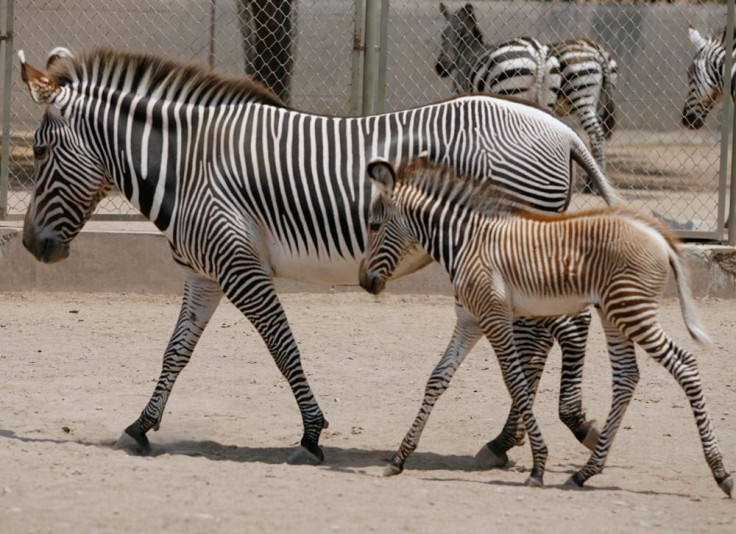The Birth Of A Grevy’s Zebra Foal At A Dutch Zoo Increases The Herd Members To 9

The Artis Zoo in Netherlands welcomes the birth of a new foal of a Grevy’s Zebra, making the total population of the herd to nine. Born on May 9, the foal makes a great addition to the herd after losing two adults earlier in 2015, reports Horsetalk New Zealand.
The foal is seen darting into the Savannah accompanied by its mother. The report said that its sire died a sudden death on April 19 due to colic. The other adult that died from the same disease was a mare who left a four-month old foal behind.
Artis Zoo joins the Grevy’s Zebra Species Survival Plan that helps preserve the population of Grevy’s zebra both in the wild and in captivity. Some of the participants for this survival plan include Lincoln Park Zoo and The Living Desert Zoo in California.
On late April 2015, California Zoo also welcomed the birth of a Grevy’s zebra foal, which became another step in helping to save this endangered species. Late in 2014, the 6th annual Grevy’s zebra conference held in Nairobi, Kenya tackled the current threats that the species face and what could be done to put a halt to its population decline.
Grevy’s zebra is also called imperial zebra and they are characterised by narrow stripes, the narrowest among the zebra species. In the 1970’s, there were 15,000 of them, but currently there are about 2800 left.
Historically, this species of zebra inhabited Somalia, Ethiopia, Eritrea, Kenya, and Djibouti, as stated in the African Wildlife Foundation, or AWF, website. However, the population decline resulted to their reduced distribution and they can now be found primarily in Southern Ethiopia and Northern Kenya.
Grevy’s zebra is suffering from population decline due to hunting, loss of access to necessary resources, predation, drought, and competition with other domestic livestock. AWF also reports that these zebras are hunted for their remarkable skins, but sometimes for food and medical purposes in some regions.
To report problems or leave feedback on this article, email: wendylemeric@gmail.com.




















